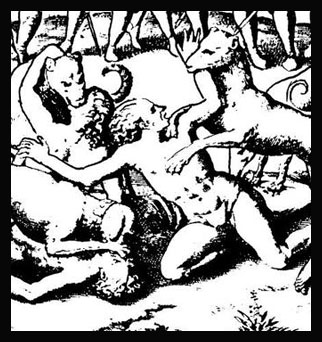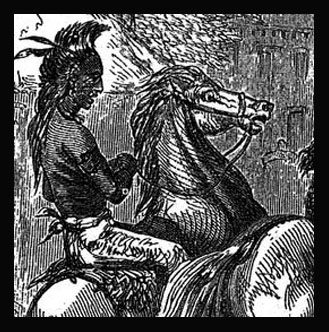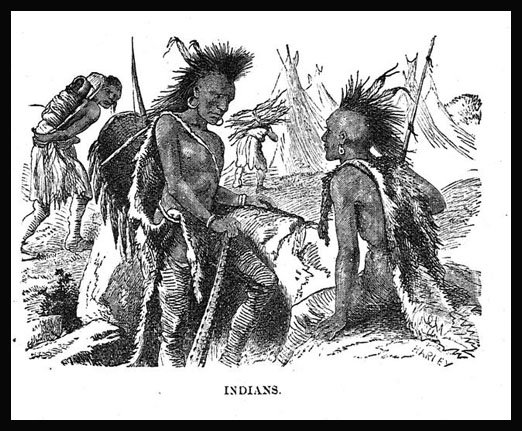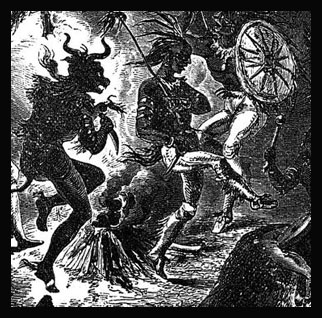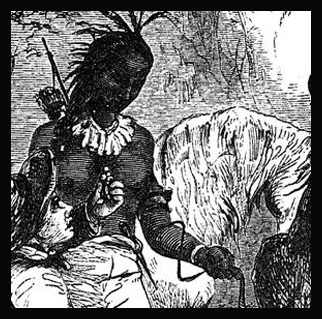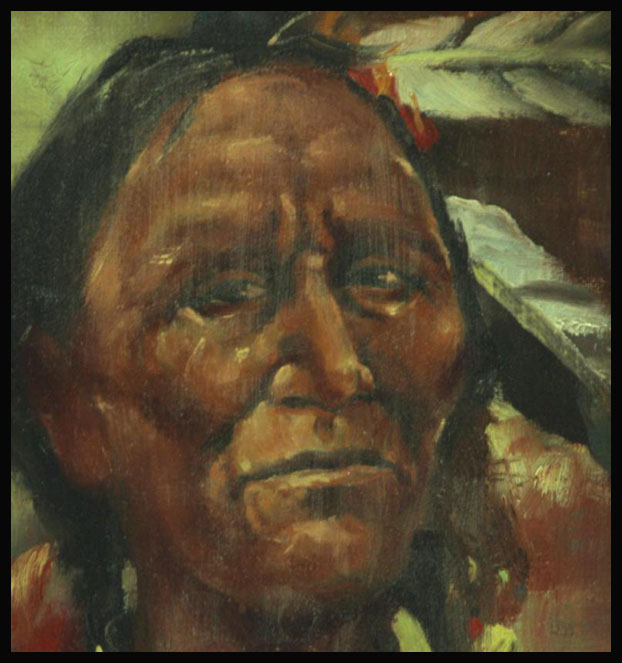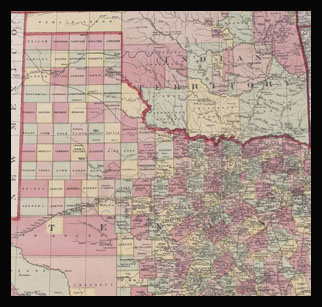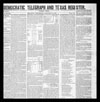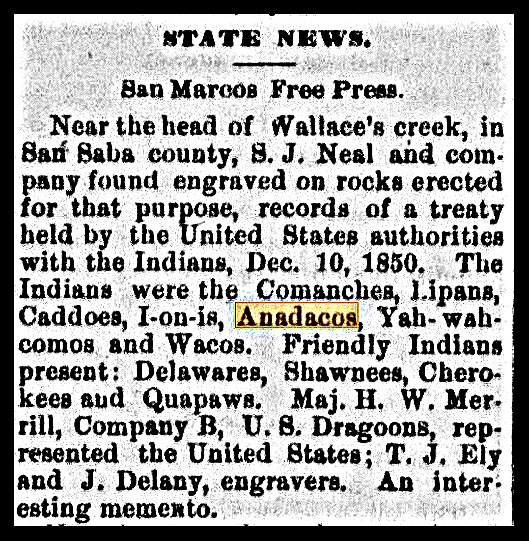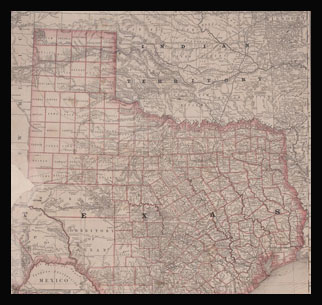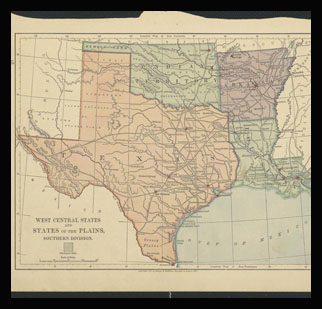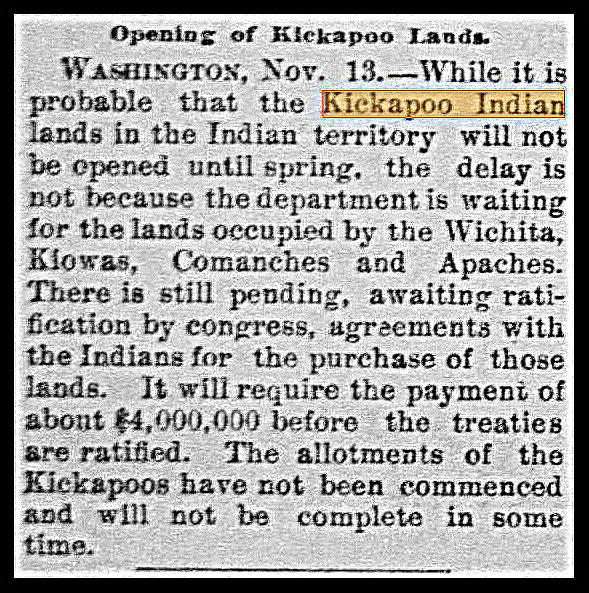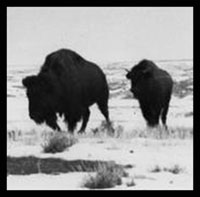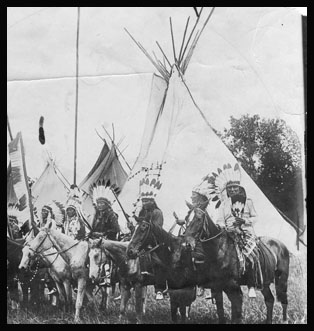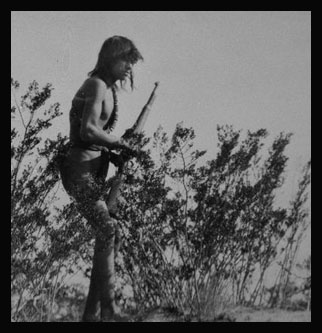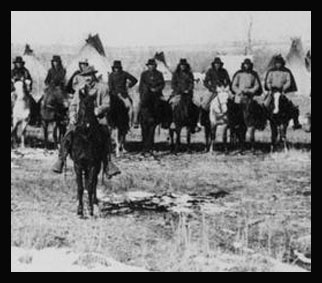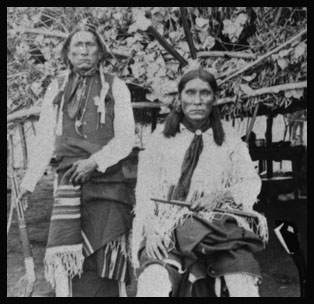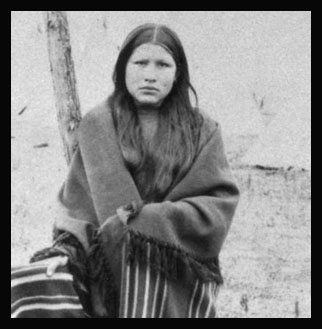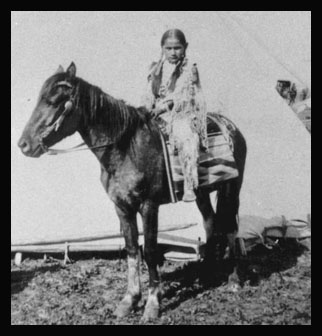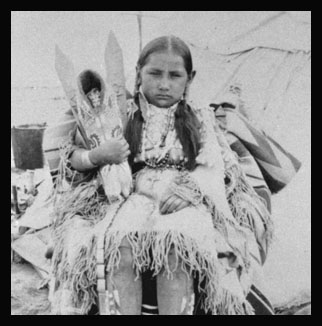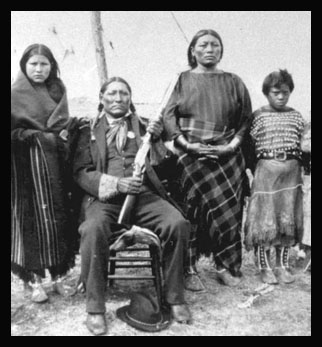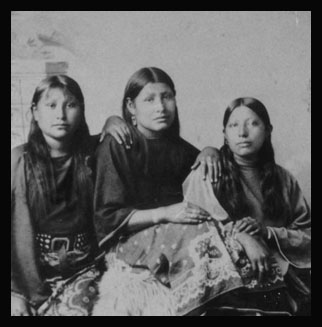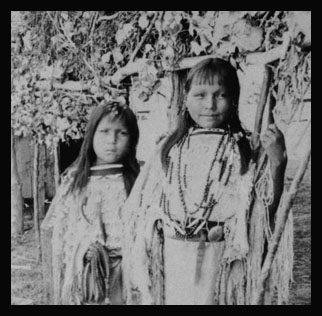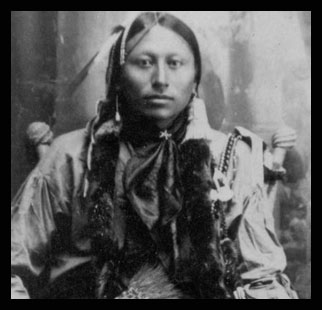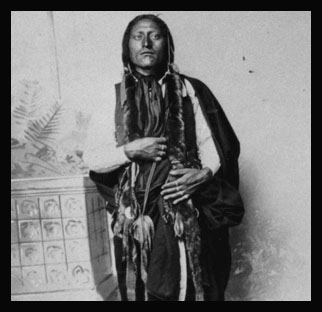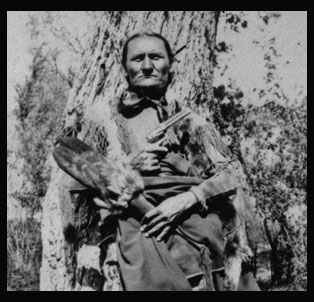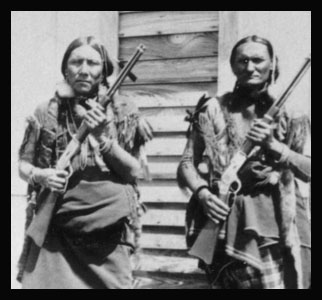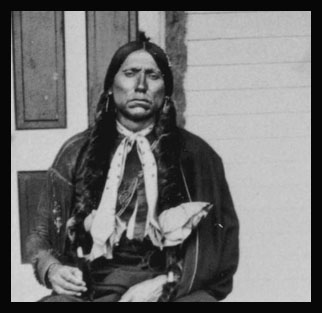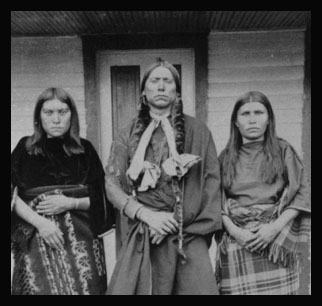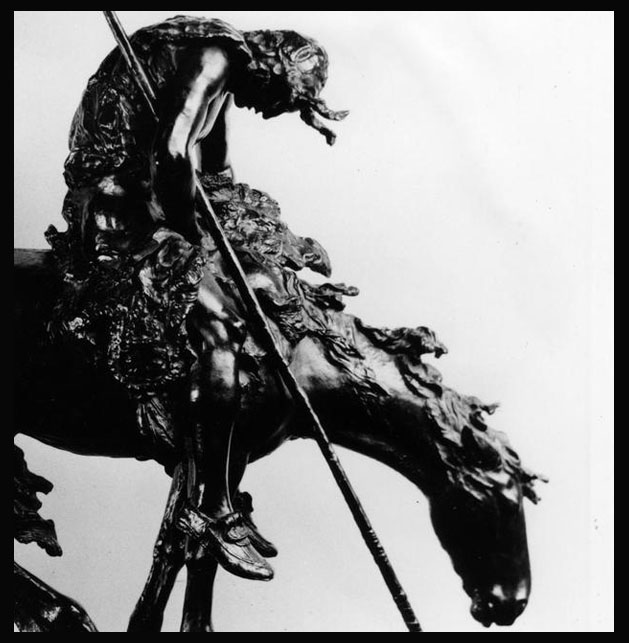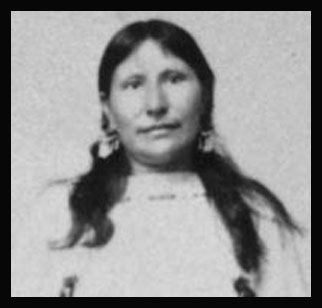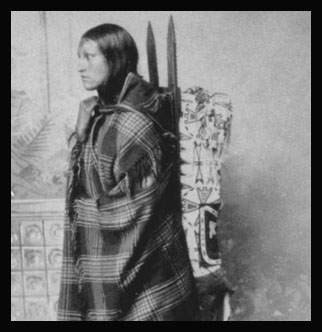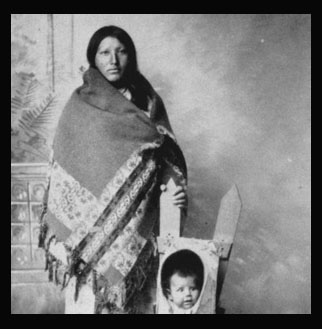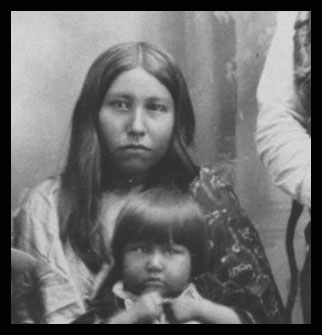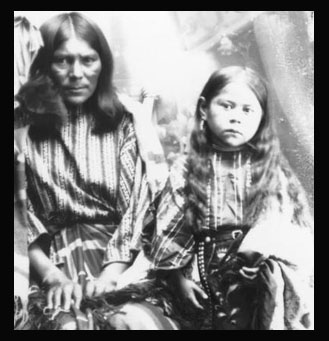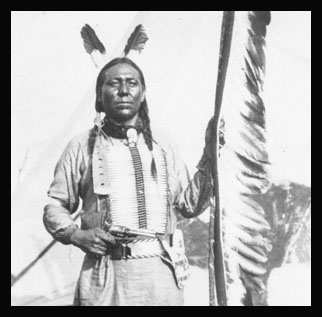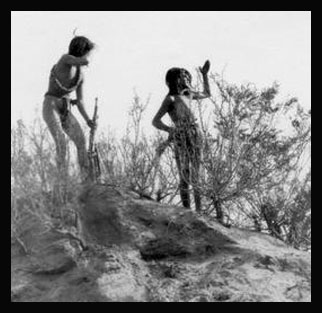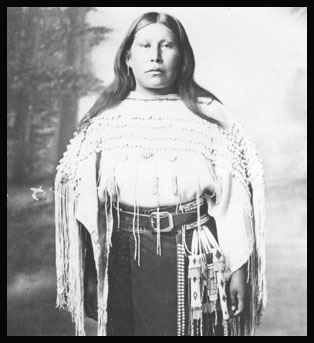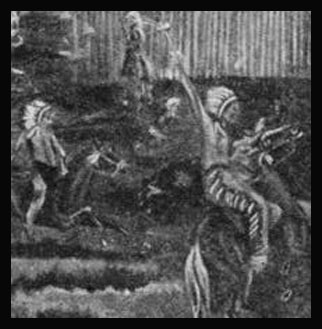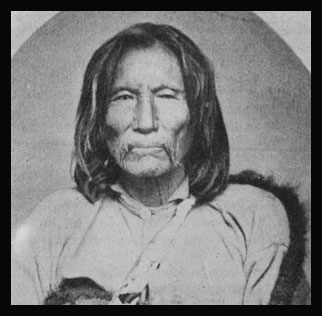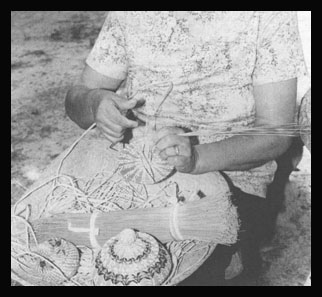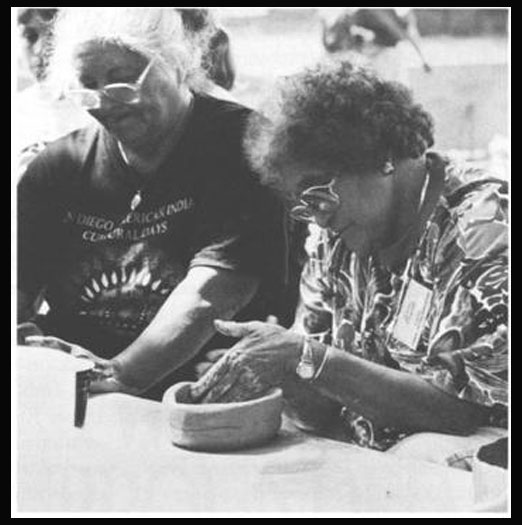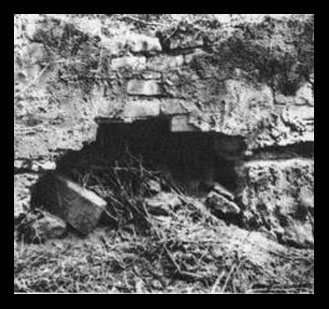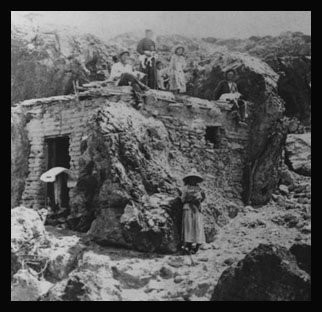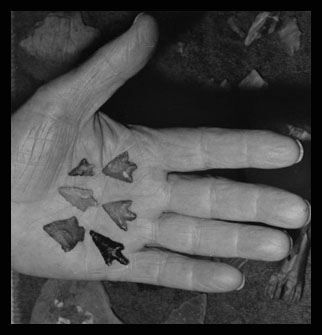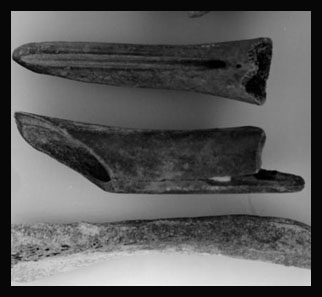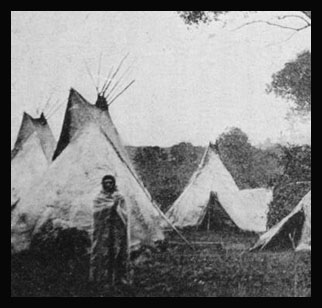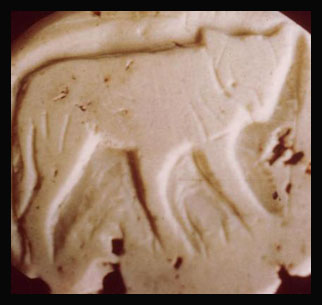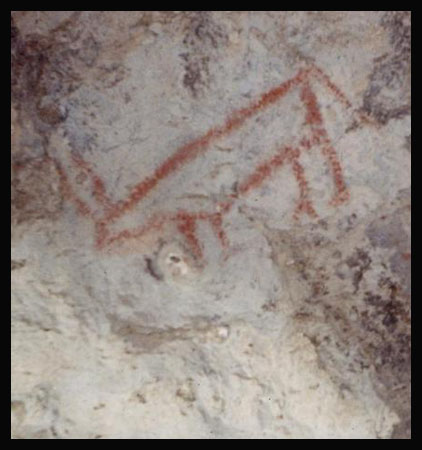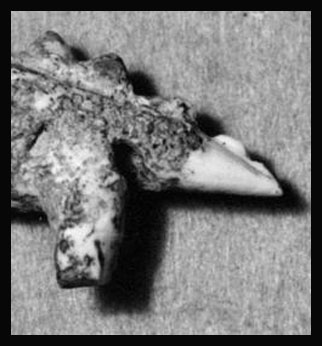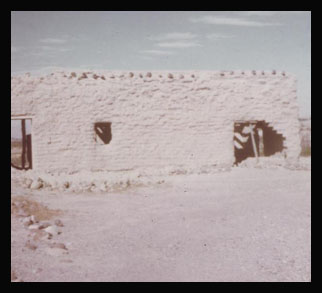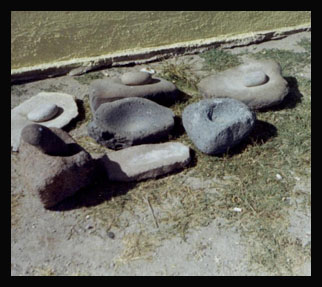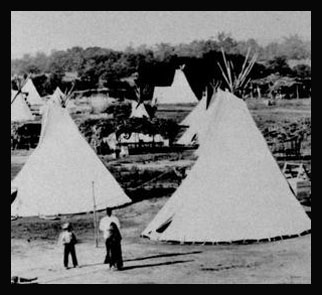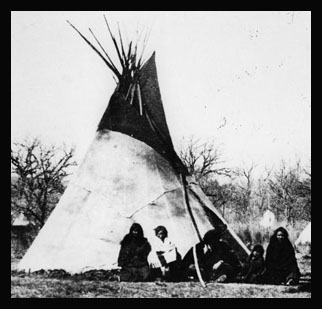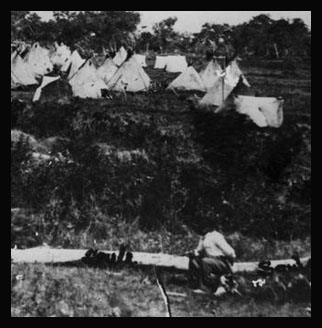Native Americans in Tejas : An Overview
The resources in this primary source set are intended for classroom use. Click on a thumbnail image to view the original resource and download link for viewing and saving. Click on the caption next to the image to view the bibliographic record, share on a network, or print. PDF documents are available for download and use in your classroom discussions.

PDF
Sixteenth century engraving illustrating the special dogs, called mastiffs, used by the Spaniards to tear apart uncooperative Indians. Moscoso is said to have used the mastiffs on a Nondacao guide who misled the expedition.
PDF
A pictorial of Native Americans on horses.
PDF
A pictorial featuring a drawing of Native Americans.
PDF
A pictorial featuring a drawing of an indian war dance.
PDF
A Pictorial featuring a trading event.
PDF
Native American Painting from the Star of the Republic Museum.
PDF
Native American Painting from the Star of the Republic Museum.
PDF
Texas and Indian Territory Map with an inset showing the "Western Part of Texas.
PDF
Weekly newspaper from Houston, Texas that includes local, state, and national news along with extensive advertising. In this printing, there is a section pertaining to stolen horses. The Wichita are named as potential culprits. (Use with the
Intermediate Student Worksheet)
This map shows the state of Texas and Indian Territory (present-day Oklahoma). Texas counties are shaded in various colors and labeled. Major cities, roads, bodies of water, and geographic features are marked (with relief shown by hachures).
PDF
Daily newspaper from Waco, Texas that includes local, state and national news along with extensive advertising.
PDF
Hand drawn color map showing Texas counties, cities, towns, roads, railroads, rivers, creeks, quarries, mills, and topographical features in 1879. Towns and geographical features of the Indian Territory are also included.
PDF
This map shows the southern U.S. states and surrounding areas including Texas, Oklahoma (still labeled "Indian Territory"), Arkansas, and Louisiana. Each state is colored and has major cities, rivers, and geographic features marked (relief shown by hachures).
PDF
Weekly newspaper from San Saba, Texas that includes local, state and national news along with extensive advertising. The highlighted section features the future of Kickapoo Indian land.
PDF
Photograph from the Cattle Raisers Museum of a herd of buffalo walking across snow-covered land.
PDF
The caption reads, "Buffaloes - Just as They Looked in the Old Day."
PDF
Moot-pope Tsokone and Chappy Poot-py-bitty standing.
PDF
Photograph of the Ponca Indians at a meeting. The men are sitting on horses with headdresses. There are multiple teepees in the background.
PDF
Copy negative from the El Paso Public Library of an armed Yaqui Indian in brush.
PDF
Photograph of a group of American Indians outside of a teepee. There is a child in the entry way to the teepee. There are animal skins hung up behind the group and a teepee in the background.
Front of photograph: "Scene in camp of Mow-Wi. Last battle at Palo Duro Canyon.
PDF
Photograph of Indian scouts and horses on a reservation. The photograph was taken during a winter in the early 1880s. There are snow patches on the ground and teepees in the background.
PDF
Indian Warriors: Acoyli and Big Buffalo. Photo circa 1890.
PDF
Dosino, from Hummingbird's Kiowa family, is pictured.
PDF
A Native American family portrait. The man is seated and wearing a suit and hat. The woman is standing and wrapped in a traditional Indian blanket. They both are wearing moccasins.
PDF
Hummingbird's daughter, Mohicahgoy, sitting next to a teepee.This photograph is from the
Resuing Texas History collection.
PDF
This family portrait is a part of the same series of photographs taken as the photograph above. Hummingbird's family from the Kiowa tribe are pictured, including Dosino on the left. This photograph is from the
Resuing Texas History collection.
PDF
This photograph is a portrait of a woman with a baby in a papoose.This photograph is from the
Resuing Texas History collection.
PDF
Native American man in traditional dress including a feathered fan-like object, moccasins, beads, and a feathered headdress.
PDF
He is wearing the traditional Kiowa men's leggings of the period.
PDF
Comanche Family: Quanah Parker and two wives. Topay is on the left, and Chonie is on the right.
PDF
A Native American woman standing next to her papoose baby. She is wrapped in a traditional Indian blanket.
PDF
Photograph of the "End of the Trail" bronze sculpture on exhibition at the opening of the National Cowboy Hall of Fame. It was created by James Earl Fraser when he was 17 years old.
PDF
Bert Seahmer, Utah, and Children, Treetop in Indian territory.
PDF
This photograph is of a family. The person standing on the left is also featured in a portrait photograph. These photos are a part of the
Rescuing Texas History collection.
PDF
Hollow Horn Bear, Brule Sioux Chief, standing in front of teepee, holding a pistol. This photograph was copyrighted in 1910 by Edward Bates.
PDF
Thomas Crow, Sioux Chief standing by his teepee.
PDF
Photograph of two Yaqui Indians standing atop a small hill partially covered by brush looking off into the distance. Many Yaqui Indians participated in the Mexican Revolution, fighting alongside revolutionaries as they rebelled against the many abuses the Mexican Government had inflicted upon them throughout the years.
PDF
Minnie Black, Comanche in full Indian costume. 600 elk's teeth used as ornaments. The teeth of elk sewn on womens dresses were a sign of fertility and wealth. A dress adorned with the two eye teeth of elk was a sign of a good hunter in the family.
PDF
This image may be found in the book titled "Life and Adventures of 'Billy' Dixon, of Adobe Walls, Texas Panhandle," a narrative which described many things relating to the early Southwest. It includes accounts of the fights between Indians and buffalo hunters at Adobe Walls and the desperate engagement at Buffalo Wallow, for which Congress voted the medal of honor to the survivors.
PDF
A painting by Miss Gwynfred Jones of Hansford, Texas illustrates the fight at Adobe Walls and is featured in a biography of Billy Dixon, detailing his life on the Texas frontier.
PDF
This image may be found in the book titled "Life and Adventures of 'Billy' Dixon, of Adobe Walls, Texas Panhandle," a narrative which described many things relating to the early Southwest. It includes accounts of the fights between Indians and buffalo hunters at Adobe Walls and the desperate engagement at Buffalo Wallow, for which Congress voted the medal of honor to the survivors.
PDF
Mrs. Jimmy Oheim, Nora Parker (Commanche), Baldwin Parker, and Donley Suddath in a group photo.
PDF
"The folk arts are not separate from everyday life, but entirely central to it." This article is featured in the Texas Historical Foundation's Texas Heritage magazine from Winter 1985.
PDF
Caddoan women try their hand at making pottery.
PDF
This image from the
Heritage shows the north wall of a kiln and an example of adobe brick construction.
PDF
Photograph of an adobe house and several people sitting and standing around it. A child is standing by the door. A woman holding a baby animal is standing near the side of the house. Three adults and two children, who are also holding animals, are sitting and standing on the roof of the house. The house was built into the side of a cliff. A note in the lower right corner says, "Duncan Photo 1442 The Rio Grande."
PDF
Photograph of six small Atakapan Indian arrow heads in a man's hand. These small arrow heads were used for fish and birds.
PDF
Five Atakapan Indian tools found along the Neches River in Orange County, Texas.
PDF
Indian camp with buffalo hide tepees. This photograph is taken from the book titled "Life and Adventures of 'Billy' Dixon, of Adobe Walls, Texas Panhandle."
PDF
This is a photograph of an oval, white Indian artifact plaque in the shape of a small canine.
PDF
Photograph of Indian petroglyphs, or cave paintings. This photo was included in a research paper by Nancy Edwards for an American History class at Marfa High School in April 1968.
PDF
This is a section of bluff painted by an unknown group of American Indians on their campgrounds. The town of Paint Rock is associated with this genre of painting.
PDF
Photograph of Indian stone carving from west Texas. This photo was included in a research paper by Nancy Edwards for an American History class at Marfa High School in April 1968.
PDF
Ruins of a Jumanos pueblo.
PDF
Photograph of a metate and mano, a tool used to grind food by Native Americans.
PDF
Photograph of some metates and manos, tools used to grind food by Native Americans.
PDF
Indian Village, Fort Sill. Photo taken in 1890: Indian Territory.
PDF
Photograph of an Indian scout next to a large teepee. Back of photograph: "typical early-day Indian reservation scene in the southwest."
PDF
Photograph of a group of American Indians sitting in front of a teepee. There are multiple teepees in the background. The people are seated on the left.
PDF
Photograph of an Indian village with multiple teepees near Fort Sill. There is a man sitting in the foreground.
PDF
Photograph of the grass huts of the Wichita Indians. Similar grass huts were used by the Caddo.
PDF
Photograph of grass huts of the Wichita Indians from the Tarrant County College NE, Heritage Room.
PDF

